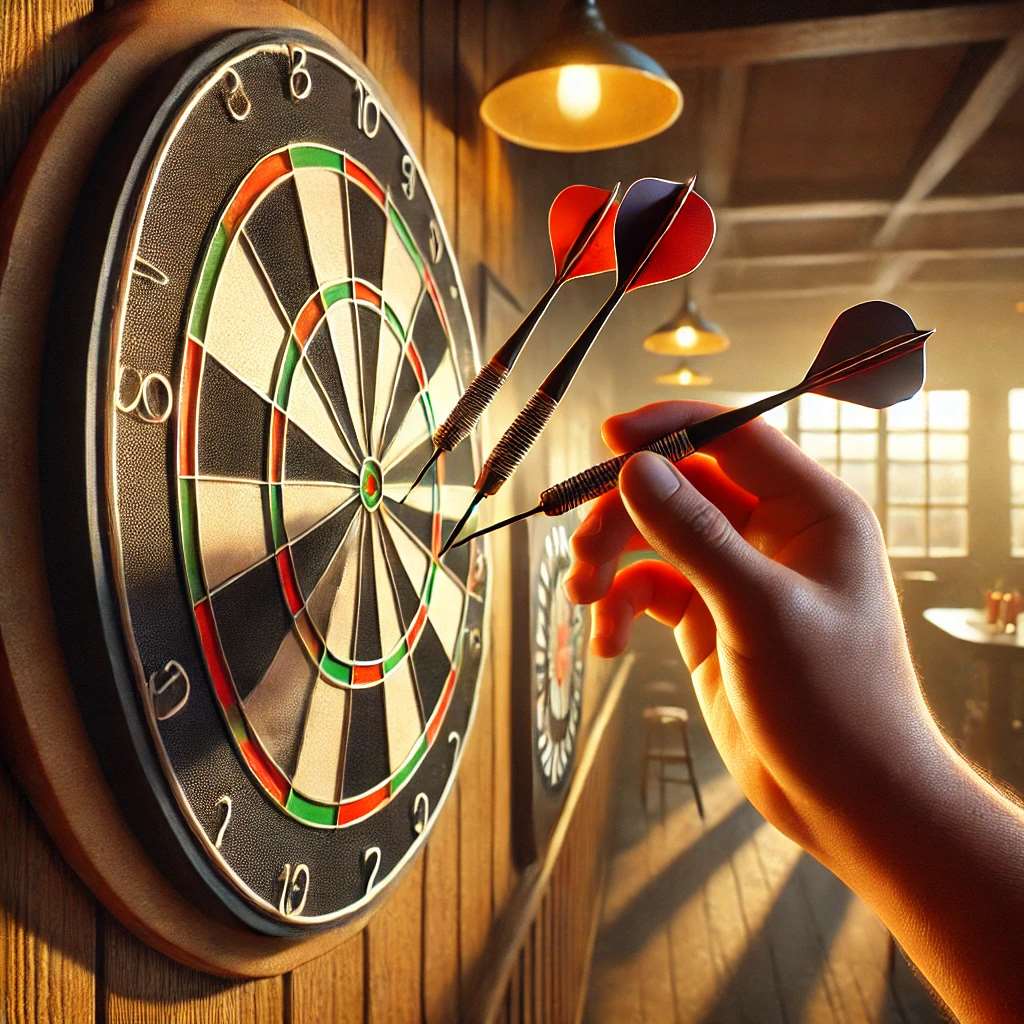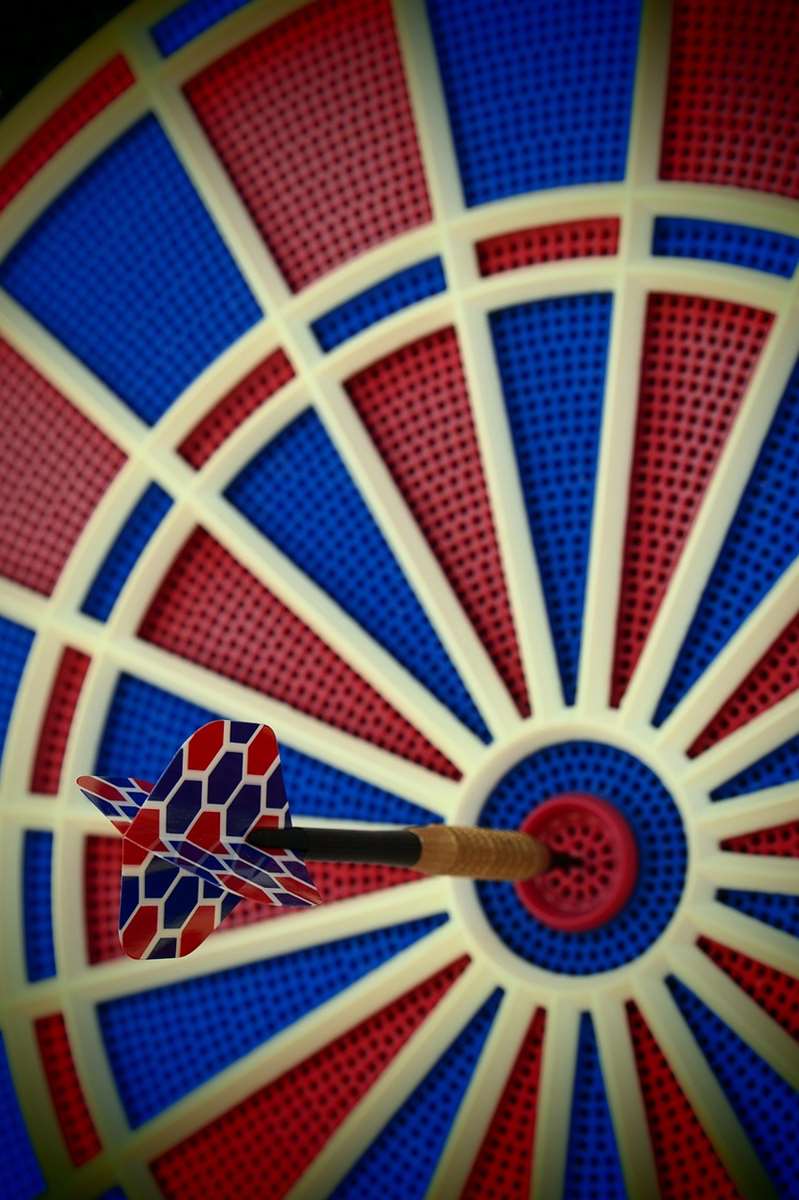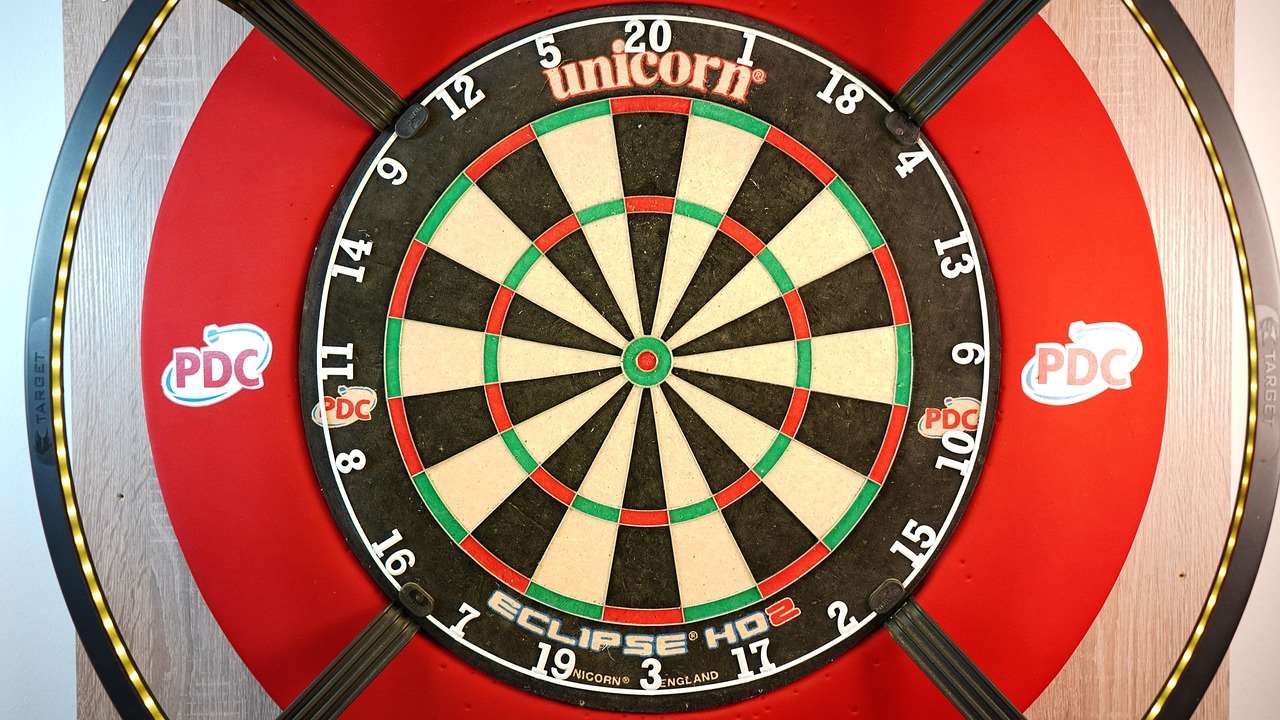Mastering darts scoring tips is crucial for consistent improvement and ultimately, winning games; understanding efficient checkout strategies and accurate counting techniques are key. This article will guide you through everything from basic scoring to advanced checkout combinations, helping you elevate your dart game.
⚠️ Still Using Pen & Paper (or a Chalkboard)?! ⚠️
Step into the future! The Dart Counter App handles all the scoring, suggests checkouts, and tracks your stats automatically. It's easier than you think!
Try the Smart Dart Counter App FREE!Ready for an upgrade? Click above!
Understanding Basic Darts Scoring
The foundation of any successful darts player lies in a solid understanding of the scoring system. A standard dartboard is divided into 20 numbered sections, ranging from 1 to 20. Each section is further subdivided by a thin wire into single, double, and treble areas. Hitting a number within the large area counts as the face value. The outer ring is the double ring, which doubles the score of that section. The inner ring is the treble ring, which triples the score. The bullseye in the center consists of two parts: the outer bull (worth 25 points) and the inner bull, also known as the double bull (worth 50 points).
The goal in most darts games, especially 501, is to reduce your starting score to zero. But there’s a catch: you must finish on a double. This means your final dart must land in the double ring or the double bullseye. Without knowing these basics, understanding darts scoring tips becomes much harder.
Essential Darts Scoring Tips for Beginners
For those new to the game, these darts scoring tips will help you grasp the fundamentals quickly:
- Know Your Numbers: Familiarize yourself with the layout of the dartboard. Understand which numbers are adjacent to each other to avoid accidentally hitting the wrong target.
- Aim for Trebles: Focusing on the treble 20 (T20) is a common strategy, as it offers the highest possible score (60) with a single dart. However, aiming for trebles requires precision and practice.
- Understand Checkout Numbers: Learn common checkout combinations (more on that later). Knowing which doubles to aim for to finish a game is essential.
- Practice Consistently: Regular practice is the key to improving your accuracy and consistency.
- Use a Dart Score Counter: Utilizing a dart score counter can help you focus on your throw and strategy without worrying about mental math. An Electronic dart score counter is a reliable way to keep accurate scores.
Advanced Darts Scoring Strategies

Once you’ve mastered the basics, it’s time to delve into more advanced darts scoring tips and strategies. This involves understanding probabilities, managing your score effectively, and planning your checkout routes.
Calculating Probabilities
Understanding the probabilities of hitting certain targets can significantly improve your decision-making. For example, if you need 100, hitting a T20 (60) leaves you with 40, requiring a double 20 (D20). However, if you miss the T20, you’re likely to still hit the single 20, leaving you with 80. A more strategic approach might be to aim for a T18 (54), which leaves you with 46. A miss here still leaves you in a manageable position.
Managing Your Score
Effective score management involves more than just reducing your total to zero. It’s about setting yourself up for easy checkout opportunities. For instance, if you have a score of 161, instead of aiming for a T20 (60), you could aim for a T17 (51), leaving you with 110. This allows you to then aim for a T20 (60) and a double 25 (50) on your next turn. It’s crucial to avoid leaving yourself with awkward numbers or single-dart finishes.
Checkout Combinations: Your Path to Victory
Knowing your checkout combinations is perhaps the most crucial aspect of darts scoring tips. Here are some common and effective checkouts:
- 170: T20, T20, Bullseye
- 167: T20, T19, Bullseye
- 164: T20, T18, Bullseye
- 161: T20, T17, Bullseye
- 160: T20, T20, D20
- 155: T20, T19, D19
- 100: T20, D20, or 20, T20, D10
- 81: T17, D15
- 40: D20
- 32: D16
- 4: D2
The key is to practice these combinations until they become second nature. This will significantly reduce the pressure you feel when approaching a checkout opportunity.
Also, remember that mastering checkout combinations involves understanding which darts to aim for first. For example, If you want to know darts how many points for bullseye, and you want to check out 100, you may aim for single 20 first.
Mental Math and Darts Scoring
While some players rely on electronic scoreboards, the ability to perform mental math quickly and accurately is a valuable skill. This allows you to adjust your strategy on the fly and avoid potential mistakes. One useful tip is to practice addition and subtraction regularly, focusing on numbers relevant to dart scores. Also, consider familiarizing yourself with standard darts masters rules to refine your overall game strategy.
Tips for Improving Mental Math
- Break Down Numbers: Instead of trying to calculate large totals at once, break them down into smaller, more manageable chunks.
- Use Visual Aids: Visualize the dartboard and the numbers involved. This can help you retain information and perform calculations more efficiently.
- Practice Regularly: Dedicate time to mental math exercises, even when you’re not playing darts.
Choosing the Right Darts and Equipment
While darts scoring tips primarily focus on technique and strategy, the equipment you use can also play a significant role in your performance. The weight, shape, and grip of your darts can all affect your accuracy and consistency. Experiment with different types of darts to find what works best for you. Similarly, ensure that your dartboard is in good condition and that the oche (the throwing line) is positioned at the correct distance. Also, remember that dart max min specifications ensure fair play.

Practice Drills to Enhance Darts Scoring
Practice is essential for improving your darts game. Here are some drills that can help you enhance your darts scoring tips:
- Around the Clock: Start at the 1 and throw three darts at each number, in order, until you reach the 20. This drill helps improve your accuracy and consistency around the board.
- Shanghai: Throw three darts at a chosen number, aiming for the single, double, and treble of that number. This drill improves your aiming skills and checkout ability.
- Checkout Practice: Choose a specific checkout combination and practice it repeatedly until you can hit it consistently.
Avoiding Common Darts Scoring Mistakes
Even experienced players sometimes make scoring mistakes. Here are some common pitfalls to avoid, related to darts scoring tips:
- Miscounting: Double-check your score after each turn to ensure accuracy.
- Incorrect Checkout: Always remember that you must finish on a double.
- Leaving Awkward Numbers: Avoid leaving yourself with scores that are difficult to check out.
- Ignoring Probabilities: Don’t blindly aim for the highest score possible without considering the potential consequences of missing.

The Importance of Consistency in Darts Scoring
Consistency is key to success in darts. It’s not enough to occasionally hit a high score or a perfect checkout. You need to be able to consistently perform at a high level. This requires a combination of proper technique, mental focus, and regular practice. Also, using a tool such as darts counter external camera can help with performance analysis.
Tips for Developing Consistency
- Maintain a Consistent Throwing Motion: Develop a smooth, repeatable throwing motion and stick to it.
- Focus on Your Target: Concentrate on your target before each throw and visualize the dart hitting the intended spot.
- Stay Calm and Relaxed: Avoid getting tense or frustrated, as this can negatively impact your accuracy.
Psychological Aspects of Darts Scoring
Darts is as much a mental game as it is a physical one. Your mindset and attitude can significantly impact your performance. Maintaining focus, managing pressure, and staying positive are all essential for success. Consider how your dart choices could affect are dart points universal to the overall match and outcome.

Tips for Maintaining a Positive Mindset
- Visualize Success: Before each throw, visualize the dart hitting your target.
- Stay Positive: Avoid dwelling on mistakes. Focus on the next throw and believe in your ability to succeed.
- Manage Pressure: Develop strategies for managing pressure situations, such as taking deep breaths or focusing on your breathing.
Utilizing Technology to Improve Your Darts Scoring
In today’s digital age, there are numerous technological tools available to help you improve your darts game. These include online scoring apps, training programs, and video analysis software. These tools can provide valuable feedback and insights into your performance, helping you identify areas for improvement. Be aware of where you get your materials, and always confirm the target darts official site is accurate.

Conclusion: Elevate Your Darts Game with Smart Scoring
Mastering darts scoring tips is a continuous journey that requires dedication, practice, and a willingness to learn. By understanding the basics, implementing advanced strategies, and developing your mental game, you can significantly improve your performance and achieve your goals. Remember to focus on consistent checkout combinations, accurate mental math, and a positive mindset. Put these tips into action and watch your darts game soar! Ready to take your game to the next level? Head to your local dart shop or browse online for the latest equipment and resources to enhance your darts journey. Don’t just play darts – conquer it!
Hi, I’m Dieter, and I created Dartcounter (Dartcounterapp.com). My motivation wasn’t being a darts expert – quite the opposite! When I first started playing, I loved the game but found keeping accurate scores and tracking stats difficult and distracting.
I figured I couldn’t be the only one struggling with this. So, I decided to build a solution: an easy-to-use application that everyone, no matter their experience level, could use to manage scoring effortlessly.
My goal for Dartcounter was simple: let the app handle the numbers – the scoring, the averages, the stats, even checkout suggestions – so players could focus purely on their throw and enjoying the game. It began as a way to solve my own beginner’s problem, and I’m thrilled it has grown into a helpful tool for the wider darts community.